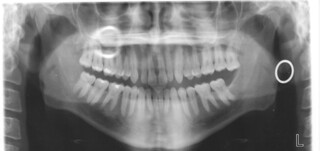 |
| A Dentist and her Dental Assistant (Photo credit: Wikipedia) |
Today, most dentists work in some type private practice environment. While every private practitioner has her/his own way of doing things, several of my dentist colleagues say they begin every day with a preparatory staff meeting at 7:45 each morning.
The entire staff is included: front desk staff, hygienists, and dental assistants. During this 45-minute meeting, they discuss the patients they’re going to see that day to review the procedures they’re doing on each one. This allows the staff to review any questions about a patient’s condition, medical history, discuss any challenges they may encounter during today's procedures ... even review billing issues. Additionally, each patient's overall treatment needs are discussed, as in scheduling necessary follow up appointments, or just routine cleaning and maintenance. The remainder of the early hours are for room/equipment prep and set up prior to seeing patients starting about 8:30 a.m.
On average, a typical workload is about 20 patients per day. While each private practice dentist may have her/his own way of scheduling procedures (reserving one or two days per week for more involved procedures), many prefer to mix up their days, thus providing variation for both the dentist and his/her staff. These procedures can run the gamut:
 |
| X-ray of teeth (Photo credit: jfraser) |
- Examining X-rays
- Cleaning
- Removing Decay
- Filling Cavities
- Tooth Extraction
- Full Mouth Restoration (root canals, crowns and bridge work, veneer work)
- Minor Surgical Procedures
- Realigning Tempo Mandibular Joint (TMJ)
- Treating Gum Disease
- Performing Surgery (to correct facial and dental deformities caused by accidents or birth defects)
- Cosmetic Work (brightening and straightening teeth)
- Making Models & Taking Measurements for Dentures (and other procedures)
- Procedural Follow Up
- Patient Education
During a typical day, a general dentist may do one to two crowns, 10-20 fillings, extract a few teeth, perhaps do a basic root canal, and also check and examine about 15 patients that had their teeth cleaned with the hygienists.
Dentists also administer various anaesthetics (see below) and prescribe antibiotics and other medications. Since restorative dental procedures and cosmetic dentistry have become more popular over the years, a typical may include doing some of those procedures as well.
Depending upon a dentist's staff, most dental offices schedule three to four patients within the same time period. This way, two patients are seen by dental hygienists having their teeth cleaned -- usually followed by a brief evaluation by the dentist -- while the other two patients are in rooms with dental assistants followed by dental treatments with the dentist.
Some patients choose to have a comprehensive exam to establish an ongoing treatment plan. A full set of X-rays are taken, the patient's gingivitis and tongue are examined, the bone structures are evaluated, and even the function of their TMJ (Tempo Mandibular Joint) is assessed. The dentist will derive a plan and outline any procedures necessary on how to create a fully functioning, healthy mouth and furthermore, how to keep it healthy. Likewise, if there are needs to be addressed such as broken, decayed or missing teeth, cosmetic options, etc., those can be discussed and planned as well.
 |
| Laughing Gas (novel) (Photo credit: Wikipedia) |
Like general practice physicians and many other doctors/health care specialists, dentists treat and interact with wide diversity of the population regarding sex, age, ethnicity, background, state of health, etc. Each patient’s mouth is different, which means the dentist has to provide specific treatments for each individual. This, in turn, makes workdays varied and interesting, even while looking into people’s oral cavities all day. A typical day usually ends with writing and reviewing the charts of each patient seen that day.
Dentists periodically meet with supply representatives, talk on the phone with lab technicians, perform accounting and bookkeeping tasks, and oversee/manage their staff. They may also teach at local or regional dental schools or sit on health-related committees/boards. Essentially, a dental practice is similar to a small business that must run efficiently to fulfil its goal of treating patients.
 In addition to a steady income and the nice lifestyle, dentistry offers flexibility, which is something many other doctorate-level practices don’t. Private practitioner dentists have the option of working either full- or part-time. Similarly, they can choose their own hours and structure their lives based on their personal proclivities and professional needs. Many choose to work four or four-and-a-half days per week. In their off hours, some dentists pursue other profitable activities outside of their practice. For example, the founder of the international animatronics and dark rides firm, Sally Corporation, which is headquartered in downtown Jacksonville, Florida, was founded by a local dentist/inventor. He'd first built a "female" talking robot head, which he called "Sally," to instruct his patients about the importance of in-home brushing and flossing. One thing lead to another and now Sally Corporation is known the world over.
In addition to a steady income and the nice lifestyle, dentistry offers flexibility, which is something many other doctorate-level practices don’t. Private practitioner dentists have the option of working either full- or part-time. Similarly, they can choose their own hours and structure their lives based on their personal proclivities and professional needs. Many choose to work four or four-and-a-half days per week. In their off hours, some dentists pursue other profitable activities outside of their practice. For example, the founder of the international animatronics and dark rides firm, Sally Corporation, which is headquartered in downtown Jacksonville, Florida, was founded by a local dentist/inventor. He'd first built a "female" talking robot head, which he called "Sally," to instruct his patients about the importance of in-home brushing and flossing. One thing lead to another and now Sally Corporation is known the world over. In this article, I discussed a typical work day/week of a private practice dentist. I outlined the various procedures a dentist (and his/her staff) does, discussed anaesthetic options most widely used prior to various procedures, and gave an overview of the advantages a private dental practice provides regarding lifestyle and practice options. If you found this article useful, please leave a relevant comment below and feel free to share and repost it.
Rick Fromme combines entrepreneurial enthusiasm with an insider's knowledge of the medical industry to co-found MedMasters.com. Both his drive and perspective helps provide health care professionals with a superior mechanism with which to communicate, network and market their strengths. Prior to founding MedMasters.com, Rick operated a highly successful medical device distributorship. Other milestones in his 12-year career in the medical industry include a key position at a medical device start-up company that was later sold to the Ethicon Endo division of Johnson & Johnson. You may reach Rick by connecting with him on Facebook, Twitter, Google+, LinkedIn and YouTube.










Sure wish ACA included dental services; I think it was extremely short-sighted of our gov't not to include it for adults.
ReplyDeleteDental care is one of the few things we seem to get right in this country. Even people that don't go to a doctor regularly see their dentist twice a year.
ReplyDeleteWho knew what a dentist life was like. Its hard to get that picture when your staring down at a drill. Still its a good thing we have them.
ReplyDelete